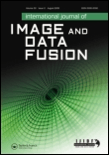
International Journal of Image and Data Fusion
metrics 2024
Advancing the Frontiers of Image and Data Integration
Introduction
The International Journal of Image and Data Fusion, published by TAYLOR & FRANCIS LTD, is a premier scholarly journal dedicated to the fields of computer science applications and earth and planetary sciences. With an ISSN of 1947-9832 and E-ISSN 1947-9824, this journal offers a unique platform for researchers, professionals, and students interested in the innovative integration of image processing and data fusion techniques. Operating from the United Kingdom, it plays a vital role in advancing knowledge and facilitating discussions in these rapidly developing domains, evidenced by its ranking within the Q3 category for Computer Science Applications and Q2 for Earth and Planetary Sciences in 2023. The journal features rigorous peer-reviewed content that spans from 2010 to 2024, encouraging the dissemination of novel research findings and methodologies. With a notable impact factor and strong Scopus rankings, it remains an essential resource for those seeking to enhance their understanding and application of sophisticated data fusion technologies in their academic or professional work.
Metrics 2024
 0.47
0.47 1.80
1.80 1.70
1.70 33
33Metrics History
Rank 2024
Scopus
IF (Web Of Science)
JCI (Web Of Science)
Quartile History
Similar Journals
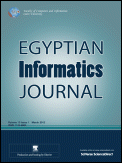
Egyptian Informatics Journal
Illuminating the Path for Researchers and PractitionersEgyptian Informatics Journal, published by CAIRO UNIV, FAC COMPUTERS & INFORMATION, is an esteemed open-access publication that has been making significant contributions to the fields of Computer Science, Information Systems, and Management Science since its inception in 2010. With its ISSN 1110-8665 and E-ISSN 2090-4754, the journal stands out for its commitment to disseminating high-quality research, evidenced by its Q1 ranking in 2023 across multiple disciplines in Scopus, including a notable ranking of #15 in Decision Sciences and Management Science, and #44 in Information Systems. The journal's coverage spans from 2010 to 2024, making it a vital resource for researchers and practitioners looking to stay abreast of contemporary advancements in informatics. With an increasing impact and a remarkably growing readership, the Egyptian Informatics Journal provides an indispensable platform for scholarly dialogue and innovation in informatics, catering not only to researchers but also to professionals and students aiming to excel in these rapidly evolving fields.

Remote Sensing Letters
Pioneering Insights in Remote Sensing MethodologiesRemote Sensing Letters, published by Taylor & Francis Ltd, is a distinguished journal that serves a vital role in the fields of Earth and Planetary Sciences as well as Electrical and Electronic Engineering. With an ISSN of 2150-704X and an E-ISSN of 2150-7058, this journal has been disseminating cutting-edge research since its inception in 2010, converging toward a future of innovation and technological advancement scheduled through 2024. The journal is recognized for its impactful scholarship, achieving a Q2 quartile ranking in both its categories as of 2023, highlighting its significance in enhancing academic discourse and applications in remote sensing methodologies. Although it does not operate under an open-access model, it provides access to essential findings that address contemporary challenges in the remote sensing domain. Located in the United Kingdom at 2-4 Park Square, Milton Park, Abingdon, OX14 4RN, Remote Sensing Letters is a crucial resource for researchers, professionals, and students committed to advancing their understanding and application of remote sensing technologies.
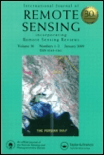
INTERNATIONAL JOURNAL OF REMOTE SENSING
Exploring the Frontiers of Earth ObservationInternational Journal of Remote Sensing, published by Taylor & Francis Ltd, stands at the forefront of Earth and Planetary Sciences, providing a critical platform for disseminating pioneering research since its inception in 1980. With an impressive ranking of #25 out of 195 in general Earth and Planetary Sciences and a notable 87th percentile on Scopus, this journal is recognized for its high-quality contributions that span diverse topics including satellite imagery analysis, geospatial technologies, and environmental monitoring. As a Q1 journal in its field for 2023, it offers invaluable insights and methodologies that are essential for researchers, professionals, and students alike. Although not Open Access, the journal facilitates a comprehensive understanding of remote sensing sciences, ensuring that the scholarly community remains updated with the latest advancements, trends, and applications that impact global challenges.

Drones, published by MDPI in Switzerland, is a leading open-access journal dedicated to advancing research in the dynamic field of drone technology and applications. Since its inception in 2017, this journal has quickly established itself as a vital source of scholarly content, boasting a Q1 ranking in Aerospace Engineering and strong placements in Artificial Intelligence, Computer Science Applications, Control and Systems Engineering, and Information Systems. The journal aims to foster discourse and innovation around drone usage across various sectors, including environmental monitoring, logistics, and advanced manufacturing. With an impressive Scopus ranking, including a top 30 position in Aerospace Engineering, Drones continues to draw contributions from a diverse array of researchers, professionals, and students, thereby enriching the academic dialogue surrounding this transformative technology. As an open-access journal, it ensures that research is widely accessible, promoting transparency and collaboration within the international research community.

International Journal of Applied Earth Observation and Geoinformation
Bridging Science and Technology for Global Change.International Journal of Applied Earth Observation and Geoinformation is a premier peer-reviewed journal published by Elsevier, focusing on the integration and application of earth observation and geoinformation technologies across diverse fields. With an open access model established in 2020, this journal enhances accessibility and dissemination of research crucial for addressing global challenges related to climate change, resource management, and sustainable development. The journal occupies a notable position within the academic community, featuring a Q1 ranking in multiple categories including Computers in Earth Sciences, Earth-Surface Processes, and Global and Planetary Change, reflecting its significant impact and relevance in these disciplines. It is recognized for its high-quality articles that explore innovative methodologies and applications, making it an essential resource for researchers, practitioners, and students alike who seek to advance their understanding of earth dynamics and geospatial technology. The journal is indexed in Scopus with impressive rankings that underscore its high citation impact and scholarly influence, with an emphasis on providing a platform for the latest findings in management, monitoring, and policy in environmental science.
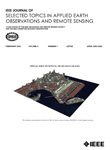
IEEE Journal of Selected Topics in Applied Earth Observations and Remote Sensing
Connecting Global Research through Open Access Earth Science Innovations.IEEE Journal of Selected Topics in Applied Earth Observations and Remote Sensing is a premier peer-reviewed journal published by the IEEE-INST ELECTRICAL ELECTRONICS ENGINEERS INC, focused on advancing the field of Earth observation and remote sensing technologies. With an impressive impact factor, this journal ranks in the top quartile (Q1) for both Atmospheric Science and Computers in Earth Sciences, underscoring its significance and influence in the academic community. Open access since 2020, it facilitates broader dissemination of research findings to enhance global visibility and accessibility for researchers, professionals, and students alike. Spanning the years from 2008 to 2024, the journal covers a myriad of topics that highlight innovative applications of remote sensing data and technologies in addressing environmental challenges. With a Scopus ranking placing it in the 91st and 89th percentiles, respectively, in its categories, the journal serves as a vital resource for advancing scholarly discourse and collaboration in Earth sciences.

South African Journal of Geomatics
Exploring the Frontiers of Geographic Information ScienceSouth African Journal of Geomatics is a pivotal platform dedicated to the advancement of geomatics, focusing on the dynamic intersection of geographic information science, surveying, and mapping technologies. Published by CONSAS CONFERENCE, the journal serves as a crucial resource for researchers, professionals, and students in the geomatics field, providing insightful, peer-reviewed articles that explore contemporary challenges and innovations. Operating under an open-access model, the journal ensures the wide dissemination of knowledge, promoting collaboration and scholarly exchange among the global geomatics community. With a commitment to enhancing the visibility of significant research and fostering academic discourse, the South African Journal of Geomatics plays a vital role in contributing to the development of this essential discipline in South Africa and beyond.
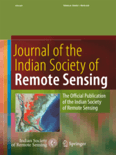
Journal of the Indian Society of Remote Sensing
Pioneering Insights into Remote Sensing TechnologiesJournal of the Indian Society of Remote Sensing, published by SPRINGER, stands as a prominent contribution to the fields of Earth and Planetary Sciences and Geography, Planning and Development. With an ISSN of 0255-660X and an E-ISSN of 0974-3006, this esteemed journal has been in circulation since 1973, showcasing a rich repository of research and advancements in remote sensing applications, methodologies, and technologies, specifically within the Indian context and beyond. The journal's impact is underscored by its placement in the Q2 category of both Earth and Planetary Sciences and Geography as of 2023, ranking impressively in the Scopus database with significant percentiles. With the intent to bridge the gap between theory and practical application, it invites scholars, researchers, and professionals to contribute innovative studies that enhance our understanding of remote sensing and its implications in various domains. The Journal of the Indian Society of Remote Sensing is a vital resource for anyone looking to remain at the forefront of research in this dynamic field.

ISPRS International Journal of Geo-Information
Innovating geoinformation technologies for global impact.ISPRS International Journal of Geo-Information, published by MDPI, stands at the forefront of the field of geospatial sciences, contributing valuable knowledge and research insights since its inception in 2012. This open access journal, which boasts an impressive collection of articles that emphasize the integration of geographic information systems (GIS) in Earth and planetary sciences, currently achieves a remarkable standing, with a 2023 impact factor ranking in the Q1 category for both Earth and Planetary Sciences and Geography, Planning and Development. Researchers and professionals engaged in the study of spatial data, remote sensing, and innovative geoinformation technologies will find the journal an essential resource, offering diverse perspectives and methodologies. With its open access model, the journal aims to promote the dissemination of knowledge globally, fostering collaboration among scholars while pushing the boundaries of research in geoinformation disciplines. The journal is based in Switzerland and is well-positioned to contribute significantly to the understanding and application of geospatial data for societal advancements.

IEEE Geoscience and Remote Sensing Letters
Innovating Insights in Geoscience and Remote SensingIEEE Geoscience and Remote Sensing Letters is a distinguished journal published by the IEEE-INST ELECTRICAL ELECTRONICS ENGINEERS INC, focusing on the cutting-edge realms of geoscience and remote sensing. Since its inception in 2004, the journal has maintained a significant role within its field, achieving a robust impact factor that places it in the Q1 category for both Electrical and Electronic Engineering and Geotechnical Engineering and Engineering Geology, reflecting its high-quality research output and influence. The journal is highly ranked in Scopus, securing the 35th position in Earth and Planetary Sciences and the 154th position in Engineering, showcasing its broad academic reach and engagement with current advancements in technology and earth sciences. Although the journal is not open access, it remains accessible to a wide readership, fostering an environment for innovation and knowledge sharing among researchers, professionals, and students interested in remote sensing technologies and geosciences. With its objective to publish concise articles that present significant results and advancements, IEEE Geoscience and Remote Sensing Letters continues to be a vital resource for anyone engaged in these dynamic fields.